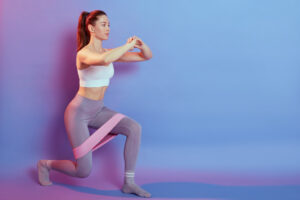When it comes to choosing the best form of physical exercise, many fitness enthusiasts find themselves weighing the merits of bodybuilding against calisthenics. Each practice has devoted followers who tout its effectiveness and benefits.
Bodybuilding, often seen as the path to muscle mass and sculpted physiques, contrasts with calisthenics, which emphasizes strength through bodyweight exercises.
This article delves into both disciplines, examining their techniques, benefits, and the lifestyle each suits best, helping you decide which might be the better fit for your fitness goals.
Bodybuilding basics
Bodybuilding is primarily focused on maximizing muscle hypertrophy and strength through resistance training. Practitioners typically utilize a variety of weights and equipment to target specific muscle groups, with the ultimate goal of enhancing muscle size and definition. The regimen involves structured exercises such as bench presses, squats, and bicep curls, which are performed in multiple sets and repetitions.
Bodybuilding not only aims to improve physical appearance but also boosts metabolic rate and can contribute to better bone health. However, it requires access to gym facilities that house the necessary equipment. The sport has also developed a competitive edge, with bodybuilders often participating in contests that judge physique according to muscle mass, symmetry, and aesthetics. The upper chest is very important for bodybuilding – try these dumbbell exercises for this muscle group.
Exploring calisthenics
Calisthenics, on the other hand, is rooted in natural human movement patterns. This discipline uses gravity and body weight as resistance, making it highly accessible to a wide audience. Common calisthenics exercises include push-ups, pull-ups, planks, and squats. These movements engage multiple muscle groups simultaneously, promoting functional strength and flexibility.
One of the most significant advantages of calisthenics is its convenience and flexibility. Exercises can be performed anywhere, from parks to living rooms, without the need for specialized equipment. This makes calisthenics a popular choice for individuals who prefer a minimalist approach to fitness or those who travel frequently and cannot always access a gym.
Even though this strength exercise is mostly popular in male fitness, women benefit from it by having more functional strength, better balance and posture. Reap those and other benefits with these beginner calisthenics routines for women.
Benefits of bodybuilding
The benefits of bodybuilding extend beyond aesthetic improvements. Regular participation in bodybuilding can lead to profound physical changes and improvements in overall health, including:
- Increased muscle mass: Bodybuilding effectively increases muscle fibers, enhancing both size and strength.
- Improved bone density: Resistance training is crucial for bone health, helping to prevent osteoporosis.
- Enhanced metabolic rate: Muscle mass increases the body’s metabolic rate, aiding in fat loss and weight management.
- Discipline and focus: The structured nature of bodybuilding workouts demands discipline and focus, which can translate into other areas of life.
Benefits of calisthenics
Calisthenics offers a range of benefits that make it an attractive option for many fitness enthusiasts, including:
- Enhanced mobility and flexibility: Frequent practice improves joint mobility and overall body flexibility.
- Increased functional strength: Exercises that mimic natural movement patterns enhance the strength that is applicable to everyday activities.
- Lower risk of injury: Bodyweight exercises typically pose a lower risk of injury compared to heavy weightlifting, as they put less strain on joints.
- Accessibility: No need for a gym membership or expensive equipment, making it easier to start and maintain a routine.
Comparing the challenges
Both bodybuilding and calisthenics offer unique challenges that can influence an individual’s decision to pursue one over the other.
Bodybuilding challenges
- Cost and accessibility: Bodybuilding generally requires access to a well-equipped gym, which can be costly and may not be accessible to everyone.
- Increased risk of injury: Lifting heavy weights, especially without proper form and supervision, can lead to injuries, particularly in the joints and back.
- Plateaus: Bodybuilders often face plateaus in muscle gain, requiring them to constantly alter their workout regimes and diet to continue seeing progress.
Calisthenics challenges
- Progression difficulty: Advancing in calisthenics can be challenging as it requires mastering increasingly difficult movements, which may demand a high level of base strength and technique.
- Limited direct muscle targeting: Unlike bodybuilding, calisthenics may not allow for as much focus on individual muscle groups, which can be a limitation for those looking to enhance specific areas of their physique.
- Weather dependence: For those who prefer outdoor workouts, calisthenics can be impacted by bad weather, limiting consistency.
Many of the challenges associated with both bodybuilding and calisthenics can be effectively addressed with the guidance of a personal trainer.
If you’re in Fayetteville and looking for expert guidance to elevate your fitness journey, consider visiting HiTone Fitness. At HiTone Fitness, we offer personalized training sessions with experienced trainers who are committed to helping you meet your fitness goals, whether it’s building muscle, improving flexibility, or enhancing overall fitness.
Final thoughts
Both bodybuilding and calisthenics have their merits and challenges, making them valuable in different contexts. Bodybuilding is excellent for those looking to build significant muscle mass and strength, offering a highly structured path toward physical aesthetics. Calisthenics, on the other hand, promotes mobility, flexibility, and functional strength, appealing to those who seek a more natural and accessible fitness routine.







